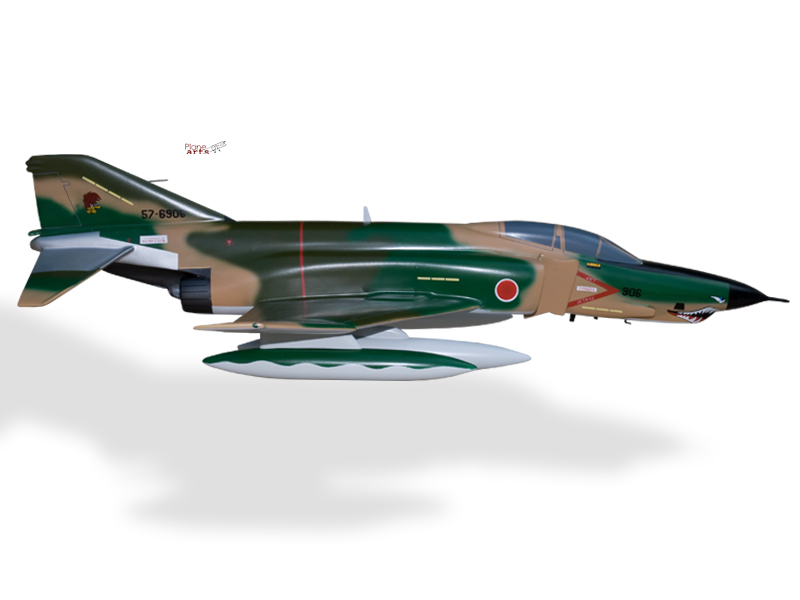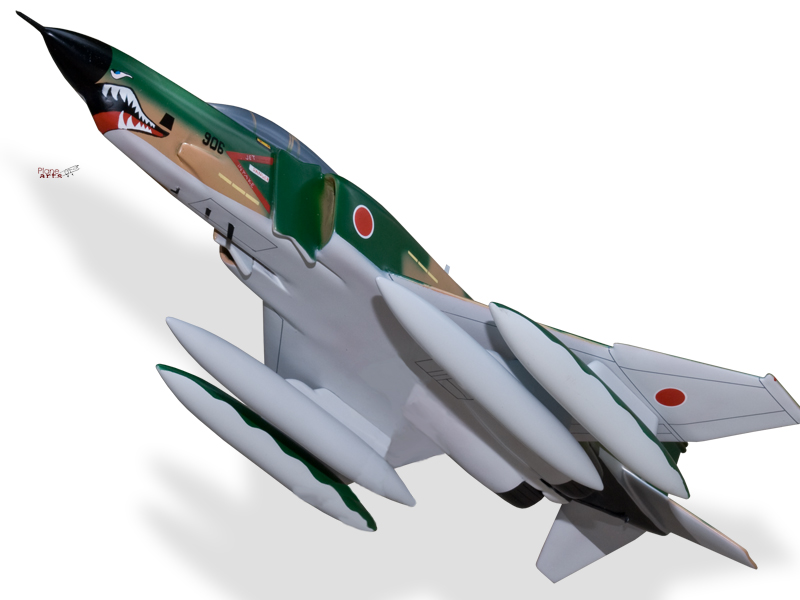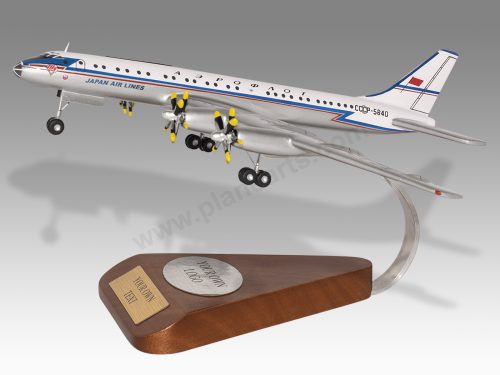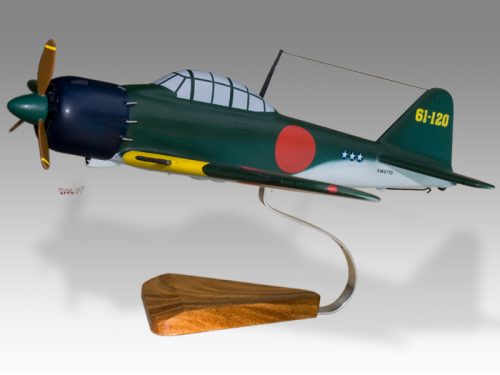Mitsubishi RF-4EJ Phantom II Japanese Air Force
Production Time 9 to 10 weeks
Shipment is by FedEx, UPS or DHL International Express Courier with a normal door-to-door delivery time worldwide of within 2-3 business days after dispatch. Due to the current volatility of world fuel prices, the amount mentioned here is our best estimate for DHL and UPS and may be subject to change at the time of shipping.

Model Description: Mitsubishi RF-4EJ Phantom II Japanese Air Force Wood Replica Scale Custom Jet Model
Manufacturer: Mitsubishi Heavy Industries Ltd.
Wingspan: 10.4 Inches (26.4 Centimeters)
Height: 4.45 Inches (11.3 Centimeters)
Scale: 1:44
Registration: 57-6906
$259.50
Production Time 9 to 10 weeks
-
United States dollar ($)
-
Pound sterling (£)
-
Euro (€)
-
Australian dollar ($)
-
Canadian dollar ($)
-
Singapore dollar ($)
-
Swiss franc (CHF)
-
Japanese yen (¥)
-
Danish krone (kr.)
-
Hong Kong dollar ($)
-
Norwegian krone (kr)
-
Swedish krona (kr)
-
United Arab Emirates dirham (د.إ)
General Product Description
Our PlaneArt Mitsubishi RF-4EJ Phantom II Japanese Air Force model exhibits unique, unrivaled quality and detailed design to come as close as possible to the accuracy of the actual plane. It comes as standard with a robust, durable base or stand which is available in a variety of different finishes designed to match your own personal requirements including solid wood, wood with polished metal supports or adjustable wood wall mount and will be ready within about 9-10 weeks from placement of order.
The Mitsubishi RF-4EJ Phantom II Japanese Air Force model is made of the finest kiln dried renewable mahogany wood (commonly known as Lauan or Meranti) which has undergone many stages of carving and meticulous and careful sanding giving the beautiful, finished museum quality masterpiece. Many collectors and model connoisseurs demonstrate their preference for genuine handmade and hand painted mahogany wood models rather than plastic or die cast (diecast) alternatives due to the overall look and totally different feel of the item - we trust you will find the same. We can however, if required produce the same model in Solid Cast Resin so just click and contact us for further information. Our craftsmen and gifted artisans ensure that our finely handcrafted model airplanes match the precise blueprint details of the original aircraft. The paint scheme, markings and parts are closely matched, reflecting the original aircraft. This stylish top-quality desktop replica model will surely enthrall anyone who receives this as a gift and for sure one of the most appropriate and desirably collectable gifts for any aviation enthusiast or avid military jet aircraft collector whilst also displaying a perfect resemblance to the actual real life version.
There are many types of military jet aircraft, but the basic types are bombers, fighters, fighter bombers, spotter planes, transporters, patrol aircraft, trainers, and reconnaissance and observation aircraft. All these types of aircraft are used for different types of missions. If you're a fan of historic or present-day military aviation, our model aircraft will bring the excitement and character of these aircraft right into your own home.
If you require, we can also make the Mitsubishi RF-4EJ Phantom II Japanese Air Force model in any other military, government or even private livery or colour scheme you require and if necessary, in a different size or scale. Just click here to contact us with a description or photographs of what you require, and we will let you have a quotation for the necessary customization by return email. We can also make bespoke scale replicas of any other private / civil commercial airliner or airliners, helicopter, glider, gliders with engines, military propeller, warplane jets, biplane, triplane, tail fin, spacecraft, rocket or NASA model you require in any airline, military or civilian livery or colors. We also produce model airships, blimps, dirigibles, blimps, boats, and ship collectibles. Wall plaque or seal for military, government or private customers. Again, by clicking here to contact us just let us know exactly what you need.
Mitsubishi RF-4EJ Phantom II: A Workhorse of the Japanese Air Self-Defense Force
The Mitsubishi RF-4EJ Phantom II has been a key component of the Japanese Air Self-Defense Force (JASDF) since its introduction. A variant of the iconic McDonnell Douglas F-4 Phantom II, the RF-4EJ was specifically tailored for reconnaissance missions without sacrificing the performance and versatility that made the original F-4 a global success. Here, we explore the unique features and enduring legacy of the RF-4EJ Phantom II in Japan’s aerial defense strategy.
Development and Introduction:
The F-4 Phantom II, originally developed by McDonnell Douglas in the United States, was a remarkable aircraft known for its double engine power, large size, and versatility in roles ranging from air-to-air combat to ground attack. Japan, recognizing the need for an advanced reconnaissance platform, adapted the F-4 into the RF-4EJ variant, focusing on enhancing its intelligence, surveillance, and reconnaissance (ISR) capabilities. Mitsubishi Heavy Industries undertook the license production of these aircraft, ensuring that they were tailored to meet the specific requirements of the JASDF.
Design and Capabilities:
The RF-4EJ maintained the robust design of its parent F-4 Phantom II but incorporated several modifications to specialize in reconnaissance:
- Airframe and Powerplant: The aircraft is powered by two General Electric J79-GE-17 engines, enabling high-speed flight and rapid altitude changes essential for reconnaissance missions. The airframe, adapted from the F-4, is designed to withstand the rigors of high-speed, low-altitude flight paths that are typical in reconnaissance operations.
- Advanced Sensors and Cameras: The nose of the RF-4EJ was redesigned to house advanced photographic and electronic sensors. It typically included a variety of cameras such as the LOROP (Long Range Oblique Photography) camera, which enabled it to capture high-resolution images from stand-off distances, crucial for spying missions over hostile territories.
- Electronic Warfare and Countermeasures: To enhance its survivability in contested airspace, the RF-4EJ was equipped with sophisticated electronic warfare systems. These included radar warning receivers and countermeasure dispensing systems that could deploy chaff and flares to evade enemy radar and heat-seeking missiles.
Operational History:
The RF-4EJ Phantom II served with distinction in the JASDF for several decades. It was primarily operated by the 501st Tactical Reconnaissance Squadron, based at Hyakuri Air Base. Over the years, these aircraft participated in numerous national and international exercises, demonstrating their capability in both peacetime and crisis scenarios. Their ability to gather critical intelligence and provide aerial reconnaissance has been pivotal in shaping Japan’s defense strategy.
Retirement and Legacy:
As technology advanced, the JASDF began phasing out the RF-4EJ in favor of more modern platforms equipped with state-of-the-art ISR technologies. The retirement of the RF-4EJ marked the end of an era for the JASDF, as it was one of the last operators of the F-4 Phantom II variants. Nevertheless, the legacy of the RF-4EJ continues to influence JASDF’s reconnaissance capabilities and its strategic planning.
The Mitsubishi RF-4EJ Phantom II stands as a testament to the enduring utility of the F-4 Phantom II platform. It combined robust performance, advanced reconnaissance technologies, and adaptability, making it one of the most significant aircraft in the history of the Japanese Air Self-Defense Force. Its contributions to Japan’s aerial reconnaissance efforts will be remembered long after its retirement from active service.
| Weight | 6 kg |
|---|---|
| Dimensions | 17 × 10.4 × 4.45 in |
Be the first to review “Mitsubishi RF-4EJ Phantom II Japanese Air Force” Cancel reply
Similar Models
Private & Civilian
Military Airplanes - Jet
Military Airplanes - Propeller
Military Airplanes - Propeller
Private & Civilian
Military Airplanes - Jet
Private & Civilian
Private & Civilian
Private & Civilian
Private & Civilian
Private & Civilian
Private & Civilian























Reviews
There are no reviews yet.